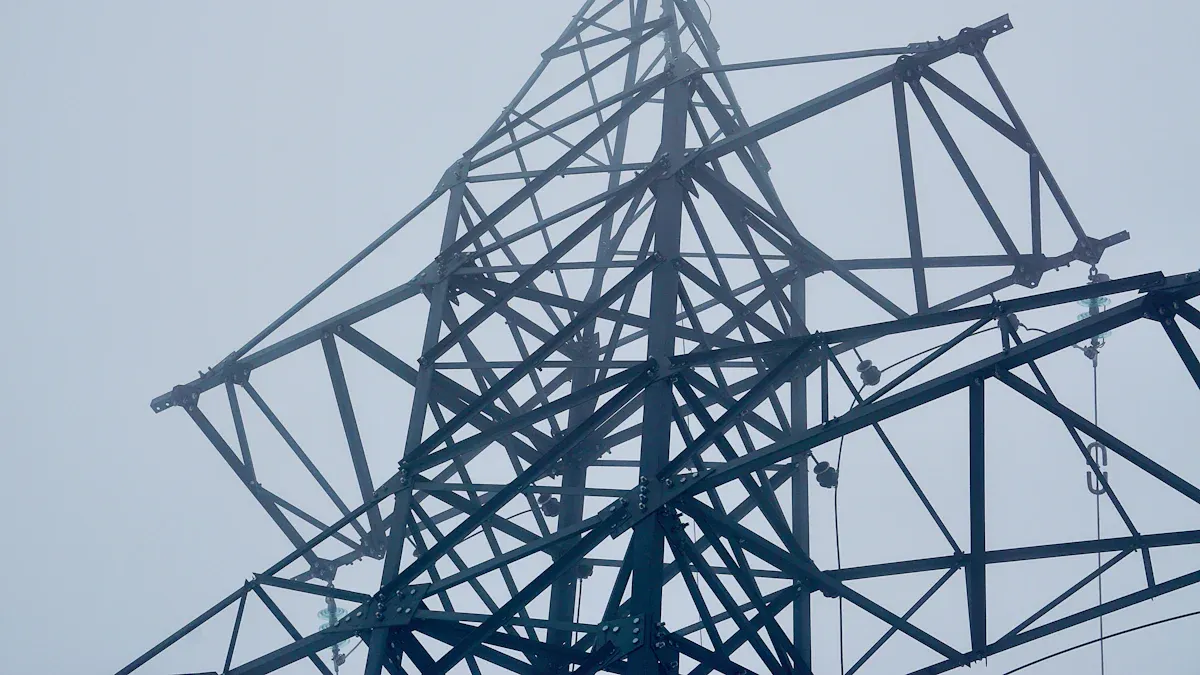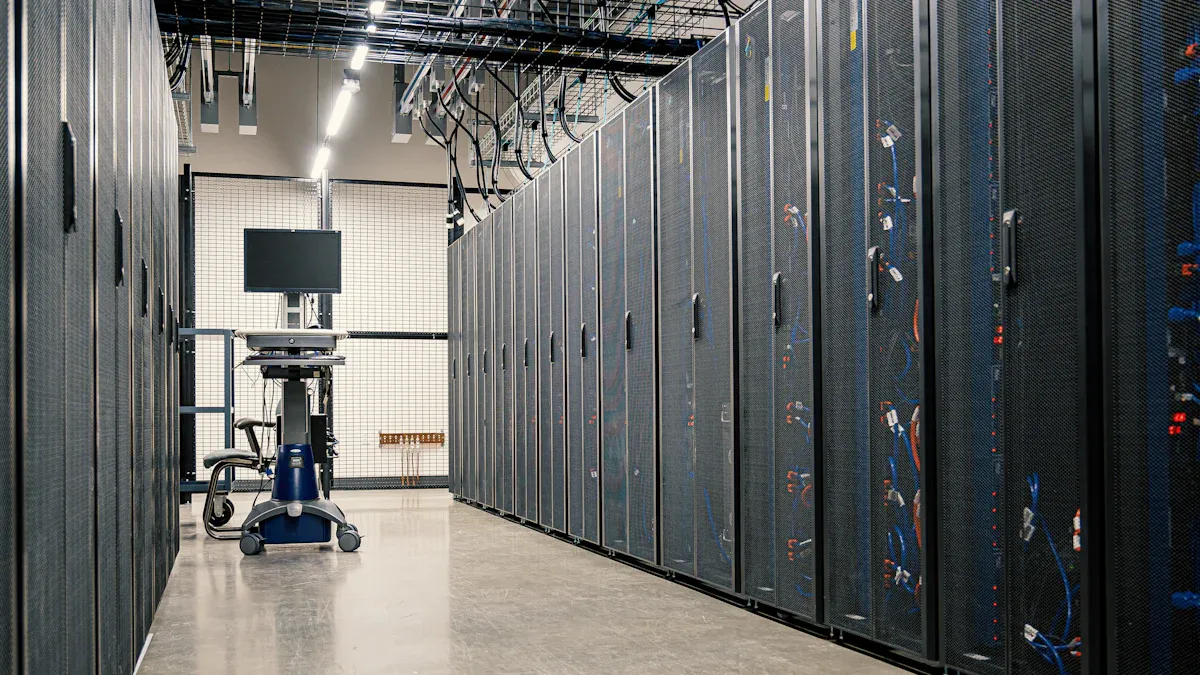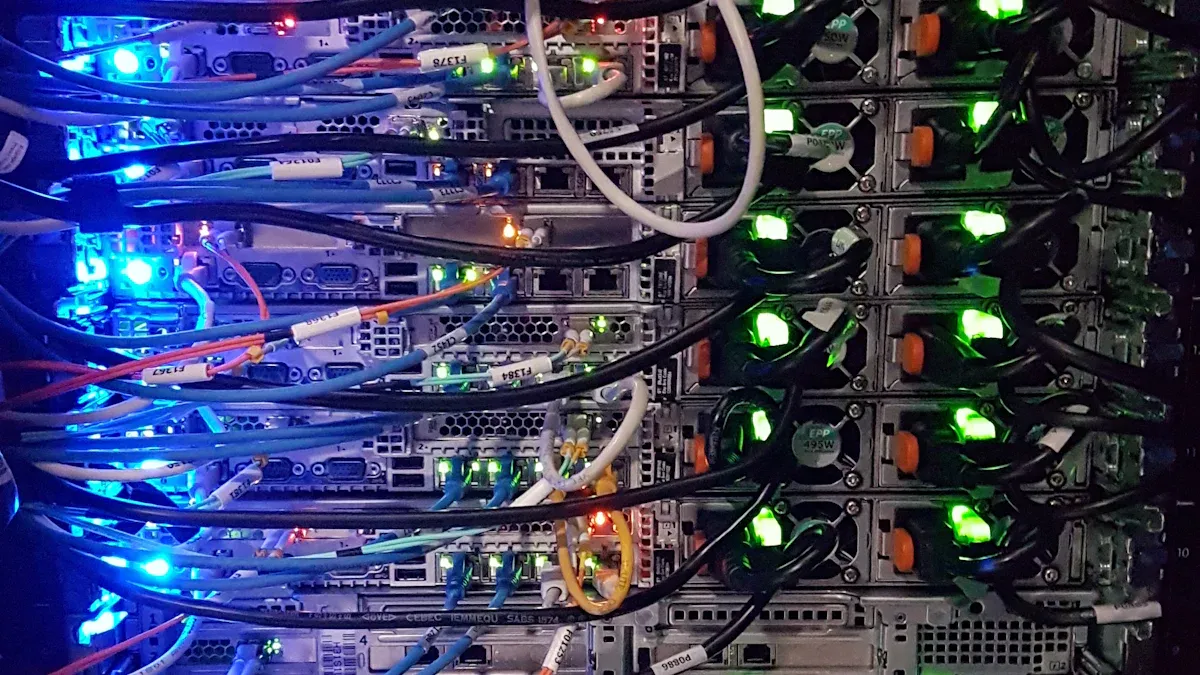
Industrial power solutions play a critical role in supporting Russia’s growing industrial sector. For large-scale facilities with high power demands, a 3-phase PDU offers unmatched efficiency and scalability. These units handle substantial power loads, reduce energy losses, and optimize consumption. By 2023, their market share surged, with a projected 6.5% CAGR from 2025 to 2030. For smaller operations, however, single-phase PDUs remain a practical choice due to their simplicity and lower power capacity.
Key Takeaways
- 3-phase PDUs work well for big industrial buildings. They save energy and handle large power needs easily. This helps cut costs.
- Single-phase PDUs are good for smaller businesses. They are cheaper, simple to set up, and fit places with less power use.
- To pick the right PDU, check your power needs now and later. Talking to experts can help you choose the best option for your facility.
Understanding Industrial Power Solutions
What Are 3-Phase Rack PDUs?
A 3-phase rack PDU is a power distribution unit designed to handle high-capacity power loads in industrial environments. These PDUs distribute electricity across three alternating currents, ensuring balanced power delivery. This design reduces energy losses and improves efficiency, making them ideal for large-scale operations.
Key specifications of 3-phase rack PDUs include:
| Specification | Details |
|---|---|
| Design | 1U Switched and Monitored |
| Remote Management | On/off/reboot capabilities per outlet |
| Monitoring | Outlet level power usage |
| Input Current | 16 Amps to 100 Amps |
| Voltage Range | -48VDC to 415V three-phase |
| Power Capacity | Up to 57.6 kW |
These units also offer advanced features like load balancing, capacity planning insights, and power quality monitoring. Their ability to support high-density IT applications makes them a cornerstone of industrial power solutions.
What Are Single-Phase Rack PDUs?
Single-phase rack PDUs are simpler power distribution units designed for smaller setups. They deliver electricity through a single alternating current, making them suitable for operations with lower power demands.
Some notable features include:
- Compact design for easy integration into tight spaces.
- High-quality materials like pure copper sockets for safety and reliability.
- Compliance with international standards such as CE, RoHS, and UL.
These PDUs are cost-effective and durable, reducing maintenance needs over time. Their straightforward design makes them a practical choice for businesses with limited power requirements.
Key Differences in Power Delivery and Functionality
The primary differences between 3-phase and single-phase rack PDUs lie in their power delivery and efficiency.
| Feature | Single-Phase PDU | 3-Phase PDU |
|---|---|---|
| Voltage Capacity | Up to 230 volts | Up to 415 volts |
| Power Delivery | Suitable for small setups | Ideal for high-demand environments |
| Efficiency | Less efficient | More efficient due to load balancing |
| Initial Cost | Generally more affordable | Higher initial investment due to complexity |
While single-phase PDUs work well for smaller operations, 3-phase PDUs excel in high-demand environments by offering better efficiency and scalability. Choosing the right PDU depends on the specific needs of the industrial facility.
Advantages and Disadvantages of 3-Phase and Single-Phase PDUs

Benefits of 3-Phase PDUs for Industrial Applications
3-phase PDUs offer several advantages that make them a preferred choice for high-demand industrial environments. These units excel in reliability, ensuring consistent power delivery even under heavy loads. Their efficiency in managing power for high-power equipment reduces energy waste, which can significantly lower operational costs. Additionally, their robust construction allows them to withstand harsh industrial conditions, making them durable and long-lasting.
Another key benefit is the inclusion of advanced protection features. Surge suppression and overload protection enhance operational stability, safeguarding equipment from unexpected power fluctuations. These features are particularly valuable in industries where downtime can lead to significant financial losses.
Limitations of 3-Phase PDUs
Despite their advantages, 3-phase PDUs come with certain limitations. Their higher initial cost can be a barrier for smaller facilities or businesses with tight budgets. Installation and maintenance may also require specialized expertise, adding to the overall expense. Furthermore, their complexity might not be necessary for operations with lower power demands, making them less practical for smaller setups.
Benefits of Single-Phase PDUs for Smaller Operations
Single-phase PDUs are ideal for smaller operations due to their simplicity and cost-effectiveness. Their compact design allows for easy integration into limited spaces, making them a practical choice for businesses with minimal power requirements. They are also straightforward to install and maintain, reducing the need for specialized technical support.
These units often feature high-quality materials, such as pure copper sockets, which enhance safety and reliability. Compliance with international standards like CE and UL further ensures their suitability for smaller-scale industrial power solutions.
Limitations of Single-Phase PDUs
Single-phase PDUs, while practical for smaller setups, face challenges in high-demand environments. For instance, a data center experienced a fault in a static transfer switch (STS), which disrupted one-third of its IT equipment and caused total unavailability. This highlights the risks associated with single-corded devices, which many installations still rely on despite the availability of dual-corded systems.
Industry experts, like Rob McClary from FORTRUST, have noted that over 50% of clients continue to use single-corded devices. This reliance can jeopardize availability and operational stability, particularly in industries with critical power needs.
Key Considerations for Russian Industrial Facilities

Typical Power Demands in Russian Industries
Russian industries often operate on a large scale, with sectors like manufacturing, oil and gas, and data centers requiring substantial energy. Facilities in these industries rely on robust power systems to ensure uninterrupted operations. For example, oil refineries and steel plants demand high-capacity power distribution to run heavy machinery efficiently. Similarly, data centers supporting cloud services and 5G networks require reliable power to maintain uptime. These diverse needs highlight the importance of selecting the right power distribution units (PDUs) to match the facility’s energy requirements.
Scalability and Future Growth in Industrial Settings
Scalability is a critical factor for industrial facilities planning for future growth. As industries adopt advanced technologies like automation and digitalization, their power demands are expected to rise. A closer look at growth trends reveals significant opportunities:
| Segment Type | Growth Rate (2024-2029) | Key Drivers |
|---|---|---|
| Tier 4 Facilities | 33% | Demand for fault-tolerant infrastructure from critical sectors like financial services and government agencies. |
| Mega Data Centers | 50% | Adoption of cloud technologies, 5G networks, and industrial digitalization, with significant investments planned. |
This data underscores the need for scalable industrial power solutions that can adapt to increasing energy demands without compromising efficiency.
Cost-Effectiveness and Budget Constraints
Cost considerations play a pivotal role in choosing the right PDU. While 3-phase PDUs offer long-term savings through energy efficiency, their higher upfront cost may strain budgets for smaller facilities. On the other hand, single-phase PDUs provide a more affordable option for businesses with limited power needs. Facilities must weigh the initial investment against operational savings to make an informed decision. Consulting with experts can help identify the most cost-effective solution tailored to specific requirements.
Maintenance and Operational Challenges
Maintaining PDUs in industrial environments presents unique challenges. Factors like technological advancements and regulatory requirements influence maintenance strategies. For instance:
- Predictive analytics can forecast failures and schedule maintenance, ensuring uptime in critical environments.
- Regulatory standards from bodies like NFPA and IEC enhance safety and operational efficiency, especially in mission-critical settings.
By adopting proactive maintenance practices, facilities can minimize downtime and extend the lifespan of their PDUs, ensuring reliable power distribution.
Decision-Making Guide for Industrial Power Solutions
Assessing Power Requirements for Your Facility
Understanding the power needs of a facility is the first step in selecting the right PDU. Industrial facilities should evaluate their equipment’s energy consumption and peak load requirements. For example, a manufacturing plant running heavy machinery will need a higher-capacity PDU compared to a small-scale operation. Conducting a thorough energy audit can help identify these needs. Facilities should also consider future power demands to avoid outgrowing their current setup too quickly.
Evaluating Budget and Long-Term Costs
Budget constraints often influence the choice between single-phase and 3-phase PDUs. While single-phase units are more affordable upfront, 3-phase PDUs offer better long-term savings due to their efficiency. Decision-makers should calculate the total cost of ownership, including installation, maintenance, and energy expenses. Comparing these costs can provide a clearer picture of which option aligns with the facility’s financial goals.
Planning for Operational Scale and Future Expansion
Industrial facilities in Russia are rapidly adopting automation and digitalization, which increases power demands. Choosing scalable industrial power solutions ensures that the facility can adapt to these changes. Decision-makers can use frameworks like the S4 Framework to evaluate PDUs. This framework categorizes features into sensing, smart, sustainable, and social, helping facilities choose solutions that align with their growth strategies.
| Framework | Description |
|---|---|
| Fuzzy TOPSIS | A fuzzy decision-making approach that evaluates solar panel companies based on multiple criteria using linguistic values. |
| S4 Framework | A framework that categorizes features into sensing, smart, sustainable, and social, facilitating a holistic evaluation. |
Consulting with PDU Suppliers and Experts
Collaborating with experienced suppliers and experts can simplify the decision-making process. Suppliers like Newsunn, with over a decade of experience, can provide tailored recommendations based on a facility’s unique needs. Their expertise ensures that facilities receive reliable and efficient PDUs that meet both current and future demands. Engaging with experts also helps facilities stay updated on the latest technologies and compliance standards.
Choosing between 3-phase and single-phase PDUs depends on the facility’s power needs. 3-phase systems excel in industrial environments with high power demands due to their efficiency and load balancing. Single-phase systems suit smaller setups but may cause inconsistent power delivery. Facilities should evaluate their requirements and consult experts to make informed decisions.
FAQ
What is the main difference between 3-phase and single-phase PDUs?
The key difference lies in power delivery. 3-phase PDUs handle higher loads efficiently, while single-phase PDUs suit smaller setups with lower power demands.
Are 3-phase PDUs more expensive to maintain?
Yes, they require specialized expertise for maintenance. However, their efficiency and durability often offset these costs over time, making them a worthwhile investment for large facilities.
How do I choose the right PDU for my facility?
Evaluate your power needs, budget, and future growth plans. Consulting with experts or suppliers like Newsunn can help you make an informed decision.
Post time: Apr-09-2025

